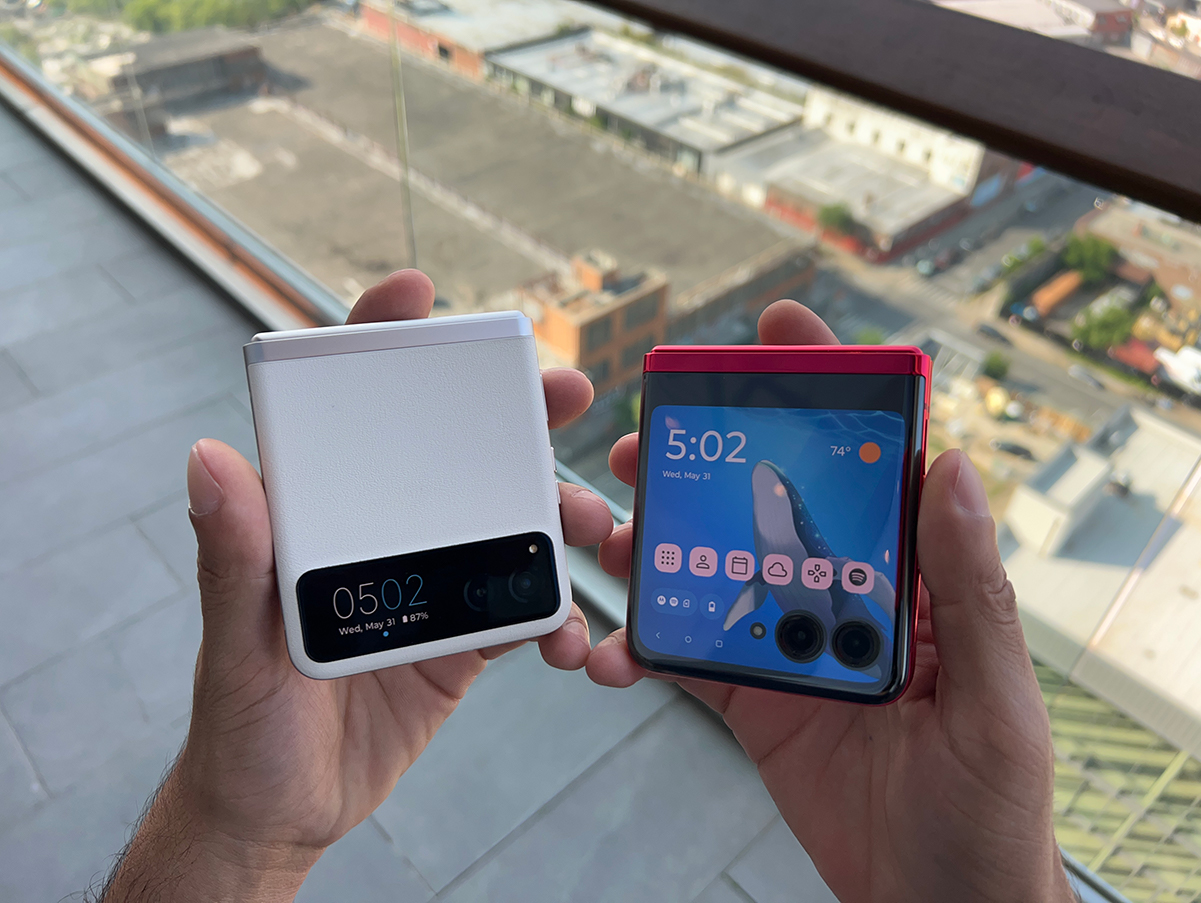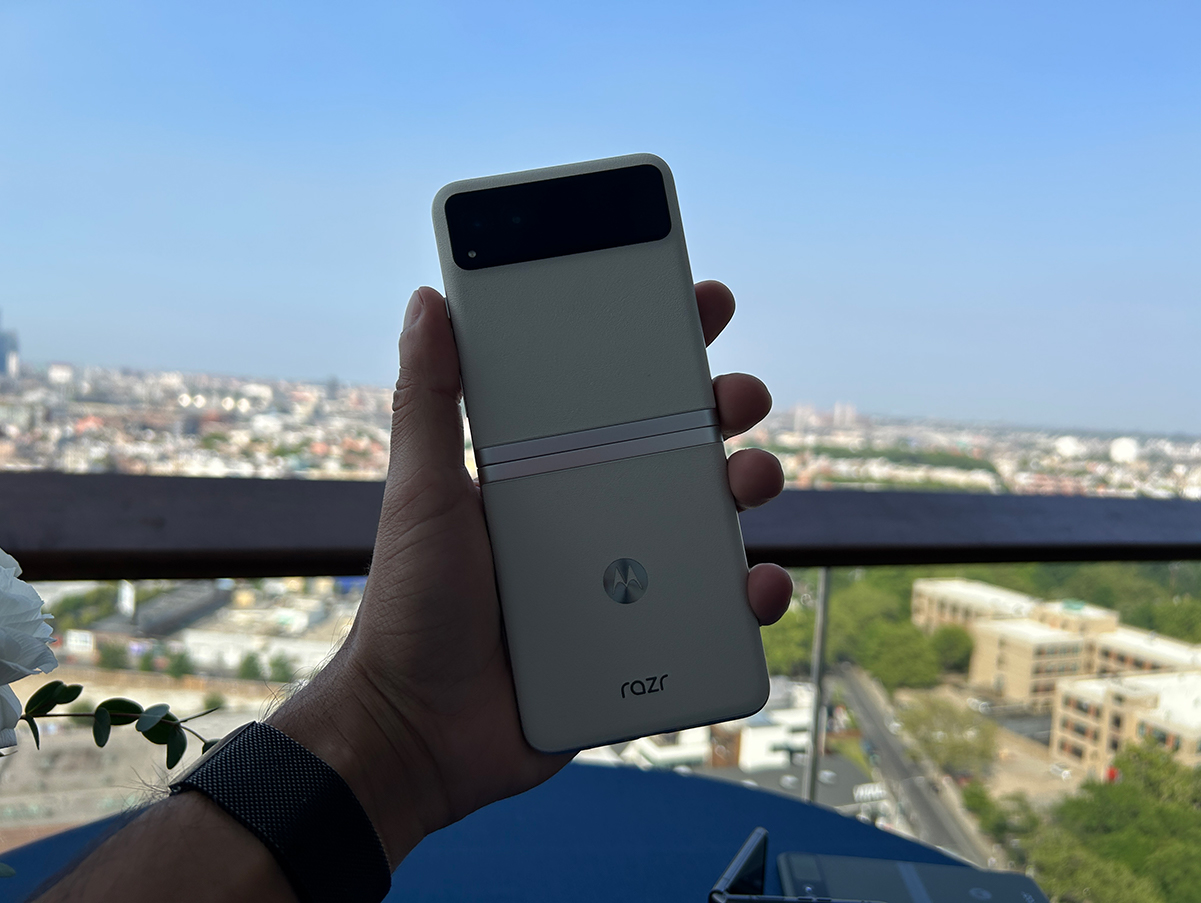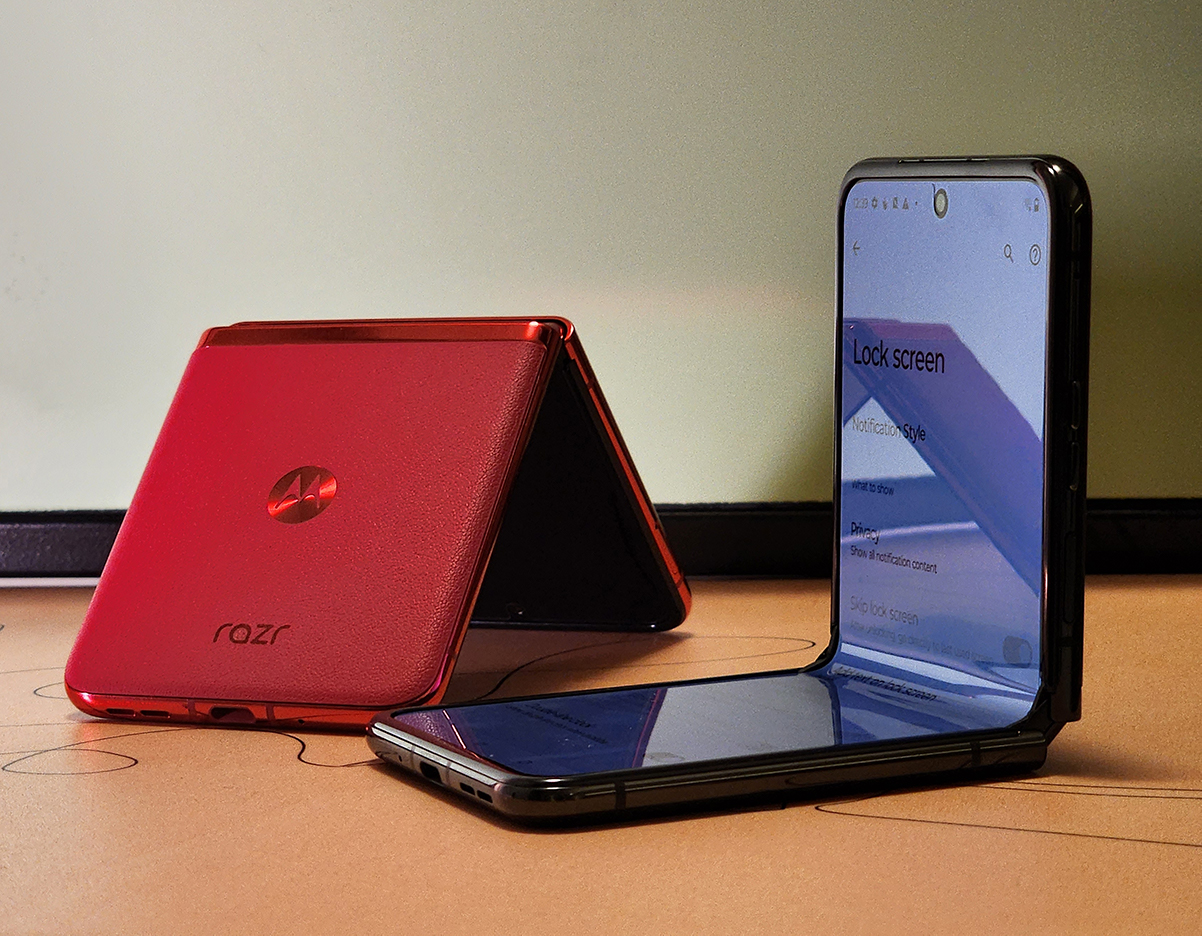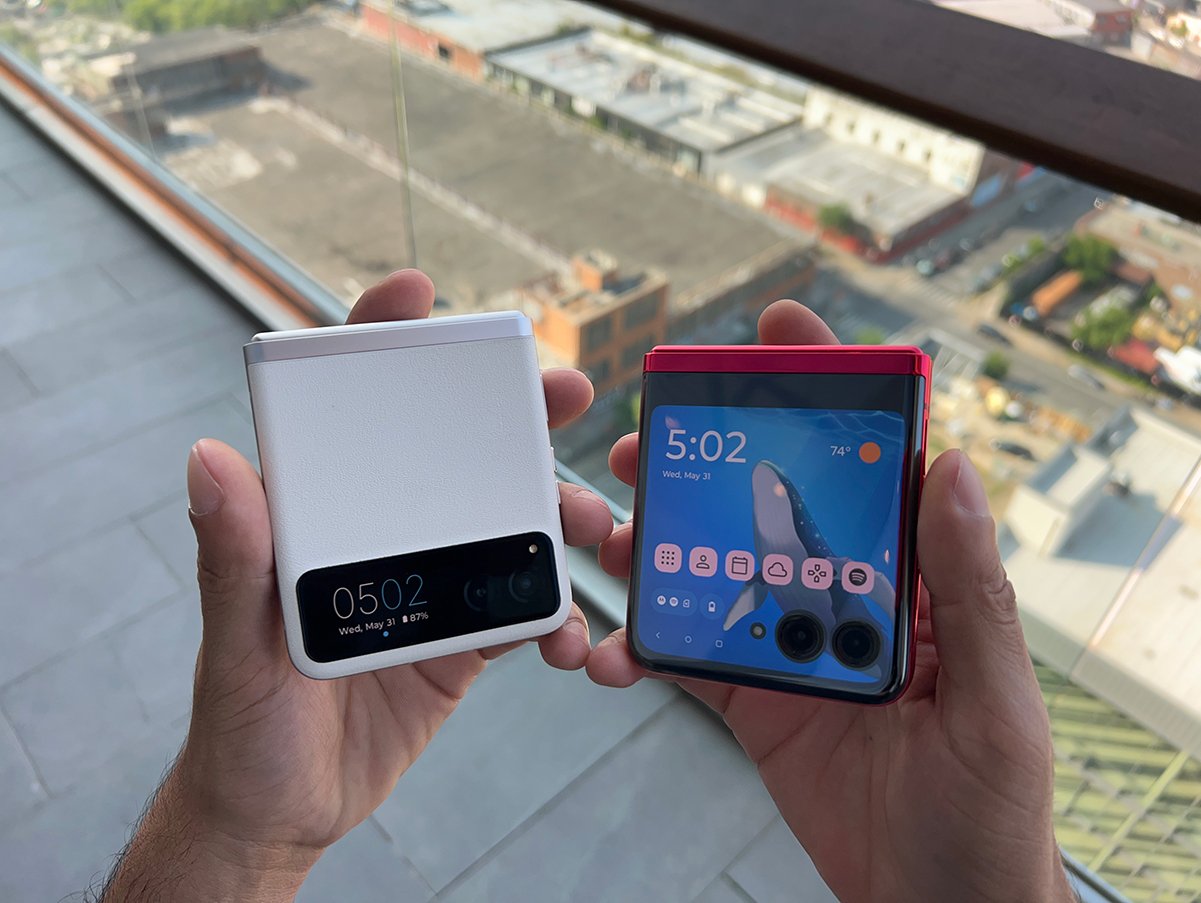The foldable mobile phone market has gained two new models. This Thursday (1), The new Motorola Razr and Razr 40 Ultra have been announced in flip format and packed with beautiful attractions.. The big emphasis goes to the more robust model, which has a larger external display.
Exactly now, if we were to specify which is the best folding mobile phone today in June, it would be the Razr 40 Ultra. The device is, yes, very similar to the Galaxy Z Flip 4, but the 3.6-inch external display really stands out, even with cameras and LED flash.
The new Razr 40 Ultra, which has a different format than its predecessor, has a large external display that allows you to use the mobile phone without having to “turn it on”. This display features a 1:1 aspect ratio and high resolution (1066 x 1056p), in addition to a 144Hz refresh rate, HDR10+ support, 1,100 nits of brightness and AMOLED technology.
From there, the user can perform operations such as checking notifications, weather, viewing contacts and applications; Browse the Spotify widget and even play some simple games. At that first contact, this seemed like a less relevant use than other attractions. Moreover, Motorola has even added a touch refresh rate of 360 Hz.
The offer is that you can perform a series of actions without having to open the larger screen of the device. An application includes, for example: open Google Maps on this screen. Besides, It is possible to watch videos from platforms like YouTube or other streaming platforms.and even use social networking apps.
The user can also customize the content and shortcuts that appear on the external screen. So it is possible to choose different themes, reposition application icons, make shortcuts to system functions and much more.
But the experience, of course, is not the same with the larger 6.9-inch screen with a high refresh rate and Full HD + resolution, in addition to the pOLED panel. The idea is that it is an advantageous addition to the fact that the mobile is not always “on”.
The main screen has poLED technology and FHD+ resolution (2650 x 1080p). It also increases the refresh rate to 165 Hz with HDR10 + support and the brightness can go up to 1,400 nits.
The Razr 40 has the same internal display. The main difference between them is that at this point, the outer screen of the most “simple” model is only 1.5 inches in size, although it still has a 120 Hz refresh rate and a number of shortcuts for applications.
More practical external display
However, both models manage to use the external display to assist the user when using the main cameras, but there’s a good difference between having a reasonable preview of the image on the most basic model and practically seeing the entire composition on the Ultra.
It’s a good possibility to use different angles on both phones and even “split” the screen between adjustments and preview. And this is where Motorola wants to win over the consumer: practicality and additional features. Besides the design, of course.
Except for the external display, the Razr 40 is very similar to the Razr 40 Ultra. And this is both in size and aesthetically. The physical difference is the model with the smaller screen is slightly heavier (188.6 g for the standard model, 184.5 g for the Ultra) and thickerbut there is an explanation for this, which we will reach shortly.

They have thin bezels in the inner display area and fingerprint reader below that. The Ultra version has Gorilla Glass Victus on both sides, while the Razr 40 only has it on the outside. However, both are IP52 certified, which only guarantees splash resistance.
One point emphasized by the company is the bet on a more attractive appearance for different generations. For example, there is a new material used in the series called vegan leather, which has a very nice texture and promises more firmness in the grip.

We also have new colors. The Razr 40 is available in ultra-dark green, purple, and cream, while the Razr 40 is available in Ultra Black, Light Blue, and Viva Magenta, Pantone’s 2023 Color of the Year. The two brands have a partnership that allows Motorola to stick with the colors that are trending in mobile phones.
custom made hardware
Motorola wants to win over the consumer in terms of design, user experience and extra features. But while it’s not “monster” in features, hardware is also an important part of it – as is the use of stereo audio outputs.
In the Razr 40 we find the Snapdragon 7 Gen 1 chipset, 8 GB of RAM and 128 GB or 256 GB of storage. The Razr 40 Ultra, on the other hand, has Snapdragon 8+ Generation 1, 8GB of RAM and 256GB or 512GB of storage – it depends on each market. Both use high speed memories (LPDDR5 and UFS 3.1) and come with Android 13.
The most advanced model doesn’t use the latest version of Qualcomm’s chipset, the Snapdragon 8 Gen 2, because, according to Motorola, its development was completed before the component’s release.
They have technologies like 5G, Wi-Fi 6E, Bluetooth 5.3, NFC, eSIM support and more. However, there are a few things that differentiate them that can influence the consumer’s choice between a more powerful display with a larger screen or a less powerful one that does the job.

For example, The Razr 40 Ultra has a 3,800 mAh battery, while the Razr 40 has a 4,200 mAh battery. So it is a little heavier. Both support up to 30W wired or 5W wireless charging, though Motorola ships a 33W charger in the box.
It depends on the needs of the consumer, who may choose a more powerful device with a large screen outside; or with a relatively less powerful, smaller external display, but a battery that lasts a little longer. In practice, however, the Razr 40’s chipset also handles more intensive use.
Cameras and new experiences
Another part of the experience is in the cameras. The Razr 40 has a 64MP main sensor as well as a 13MP secondary sensor that is wider-angle and versatile at the same time. Inside, with the screen on, there’s a 32MP sensor, which is also used in the Ultra version.
In the most advanced model, the cameras are already 12 MP and 13 MP. However, the two have optical image stabilization on the main sensor, which should help create more stable photos and less shaky videos.
During my time with the two devices, I could see that the brand paid a certain attention to their camera experience. The hinges of both are very sturdy, allowing you to place them in different positions to save. And of course, having a preview of the content on the outside screen is something that makes things easy in these times.

There are also new camera modes that let you make using it a little more interactive. But in this case, it is worth noting that the user can hold the devices in different ways, which helps to find different angles while making the captures.
Motorola also announced a new partnership with audio brand Bose. On the other hand, he did not give any details on whether it will include hardware or software. The new mobile phones come with Dolby Atmos sound.
When will you arrive in Brazil?
The new Motorola Razr is coming to make a sound in the folding market, which is experiencing a growth curve. Still, of course, the prices are there. For example, the Razr 40 Ultra costs $999 in the US (about R$5,000 in direct conversion). We still don’t have prices in Brazil, but I’d estimate somewhere between R$6,000 and R$7,000.
The fourth generation of Motorola’s foldable mobile phones will be launched in Brazil. However, the company has not yet confirmed the official date or prices.. However, the devices are expected to be announced in the country as early as next Monday (5).
Source: Tec Mundo
I’m Ben Stock, a highly experienced and passionate journalist with a career in the news industry spanning more than 10 years. I specialize in writing content for websites, including researching and interviewing sources to produce engaging articles. My current role is as an author at Gadget Onus, where I mainly cover the mobile section.









